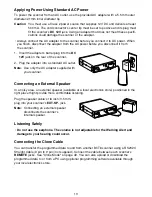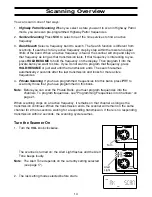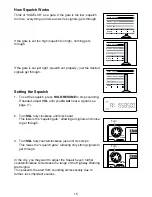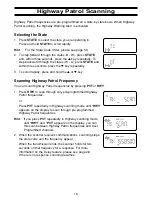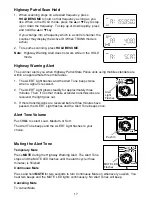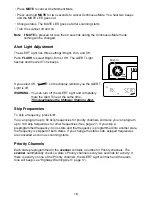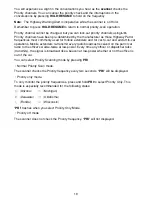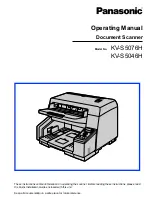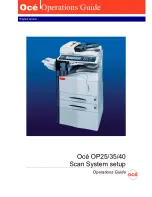
4
Terminology
What are Highway Patrol Alerts?
Most highway patrol vehicles on the road today are equipped with a secondary radio system
known as a “mobile extender” or “vehicular repeater.” Whenever the dispatcher transmits to
any vehicle in the district, “mobile extender” in every car within the district is activated.
Using a constant PRIORITY check of specific frequencies in each state, the BCT8
recognizes and alerts you to transmissions from “mobile extender” radios as well as from
car-to-car, aircraft-to-car and other special-purpose frequencies. You receive an audible
(beep tone) and visual (flashing Alert light) alert whenever you are within an approximate
three-mile radius of Highway Patrol/ State Police units using a mobile extender unit.
What is Scanning?
Unlike standard AM or FM radio stations, most two-way communications do not transmit
continuously. The BCT8 scans the Frequencies you have programmed into the Scanner’s
channels until it finds an active frequency.
Scanning stops on an active frequency and remains on that channel as long as the
transmission continues. When the transmission ends, the scanning cycle resumes until
another transmission is received.
What is Searching?
The BCT8 can search each of its 13 bands to find active frequencies. This is different from
scanning because you are searching for frequencies that have not been programmed into
your Scanner’s channels. The scanner automatically chooses between two speeds while
searching. During search mode the scanner will search 100 frequencies per second for band
with 12.5 kHz steps and during Turbo SEARCH mode the scanner can achieve up to 300
frequencies per second for bands with 5 kHz steps.
What is Trunk Tracking?
Conventional scanning is a simple concept. You enter a radio frequency in your scanner’s
memory which is used by someone you want to monitor. For example, the police in your
area may broadcast on 460.500 MHz, the fire department on 154.445 MHz, the highway
department on 37.900 MHz, etc. So when your scanner stops on a frequency, you usually
know who it is, and more importantly, you can stop on a channel and listen to an entire
conversation. This type of scanning is easy and fun.
As the demand for public communications has increased, many public radio users don't
have enough frequencies to meet their needs, and this has created a serious problem.
Trunking radio systems have been implemented to solve this problem.

















